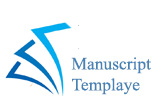Studi Timbulan, Komposisi dan Karakteristik Sampah Institusi di UPN Veteran Yogyakarta
Abstract
UPN “Veteran” Yogyakarta does not apply a sustainable solid waste management system. Waste is only carried out by storing, collecting, and transporting to TPA Piyungan. The purpose of this study was to determine the generation, composition and characteristics of waste and to provide recommendations for sustainable waste management strategies on the UPNVY campus. The method of measuring waste generation and composition refers to SNI 19-3964-1994. Waste characteristics were analyzed by proximate test and ultimate test. The results of the survey and measurements showed that the waste generation at UPNVY was 135.45 kg/day covering Campus I Condong catur at 96.66 kg/day and Campus II Babarsari at 37.79 kg/day. The composition of waste consists of organic waste (24.840%), paper (23.499%), soft plastic (7.450%), hard plastic (5.673%), plastic bag (9.129%), metal (1.294%), glass (1.392%), hazardous waste (0.512%), other waste (9.289%), and residue (16.922%). The proximate test showed that the highest moisture content was in food waste, the highest volatile content and calorific value were found in hard plastic. Meanwhile, the lowest ash content in soft plastic and the lowest fixed Carbon content was owned by plastic bag. For the ultimate test, plastic waste has the highest C and H content. The recommended sustainable waste management strategies are waste reduction and sortation; provision of sorted trash cans, processing of organic waste into compost; and construction of 3R TPS.
Full Text:
PDFReferences
Anonim. (1994). SNI 19-3964-1994 Pengambilan dan Pengukuran Contoh Timbulan dan Komposisi Sampah Perkotaan.
Aprillia, R., & Anggraini, I. M. (2019). Strategi Pengelolaan Sampah Melalui Analisis Timbulan dan Karakteristik Sampah di Universitas Nahdlatul Ulama Kalimantan Barat. Jurnal Teknologi Lingkungan Lahan Basah, 07(02), 8–12.
Damanhuri, E., & Padmi, T. (2016). Pengelolaan Sampah Terpadu. Penerbit ITB.
Dewilda, Y., & Julianto, J. (2019). Kajian Timbulan, Komposisi, dan Potensi Daur Ulang Sampah Sebagai Dasar Perencanaan Pengelolaan Sampah Kawasan Kampus Universitas Putra Indonesia (UPI). Seminar Nasional Pembangunan Wilayah Dan Kota Berkelanjutan, 1(1), 142–151. https://doi.org/10.25105/pwkb.v1i1.5270
Ishak, N. R., Mahayuddin, S. A., & Mohamed, M. R. (2015). Generation and Composition of Solid Waste in University Campus. Proceedings of the Colloquium on Administrative Science and Technology, 119–126. https://doi.org/10.1007/978-981-4585-45-3_13
PU, K. (2016). Petunjuk Teknis TPS 3R. 53(9), 1689–1699.
Sepfitrah. (2016). Analisis Proximate Hasil Tambang di Riau (Studi Kasus Logas, Selensen dan Pangkalan Lesung ). Jurnal Sainstek STT Pekanbaru, 4(1), 18–26.
Singh Dangi, V., & Kumar Agarwal, A. (2017). Current Practices of Solid Waste Management in MITS Campus, Gwalior: A Case Study. International Journal for Research in Applied Science & Engineering Technology (IJRASET), 5(5), 884–889. https://www.ijraset.com/fileserve.php?FID=7785
Sungkowo A, Widiarti W. I., Astuti F. A., Anasstasia, T. T. (2019). Kajian Perilaku Sivitas Akademika Terhadap Sampah Di Lingkungan UPN “Veteran” Yogyakarta. Prosiding Seminar Nasional Tahun Ke-5 Hasil Penelitian Dan Pengabdian Kemenristekdikti RI, 1113–1122.
Tchobanoglous, G. (1993). Integrated Solid Waste Management. McGraw Hill.
Widiarti, I., Ardianti, A., & Gati, A. (2021). Analisis Pengelolaan Sampah Di UPN “Veteran” Yogyakarta (UPNVY) Tahun 2019. Jurnal Ilmiah Lingkungan Kebumian (JILK), 3(1), 30. https://doi.org/10.31315/jilk.v3i1.3406
Yuliandari, P., Suroso, E., & Sari, P. (2019). Studi Timbulan Dan Komposisi Sampah Di Kampus Universitas Lampung. Journal of Tropical Upland Resources, 01(01), 121–128.
DOI: https://doi.org/10.31315/jmel.v6i1.5650
Refbacks
- There are currently no refbacks.
This Journal indexed to :
====================================================
Jurnal Mineral, Energi, dan Lingkungan
Published By: Universitas Pembangunan Nasional Veteran Yogyakarta
Addres: Jl. Padjajaran Jl. Ring Road Utara No.104, Ngropoh, Condongcatur, Sleman, Yogyakarta

This work is licensed under a Creative Commons Attribution-ShareAlike 4.0 International License. Statistik Jurnal











.jpg)